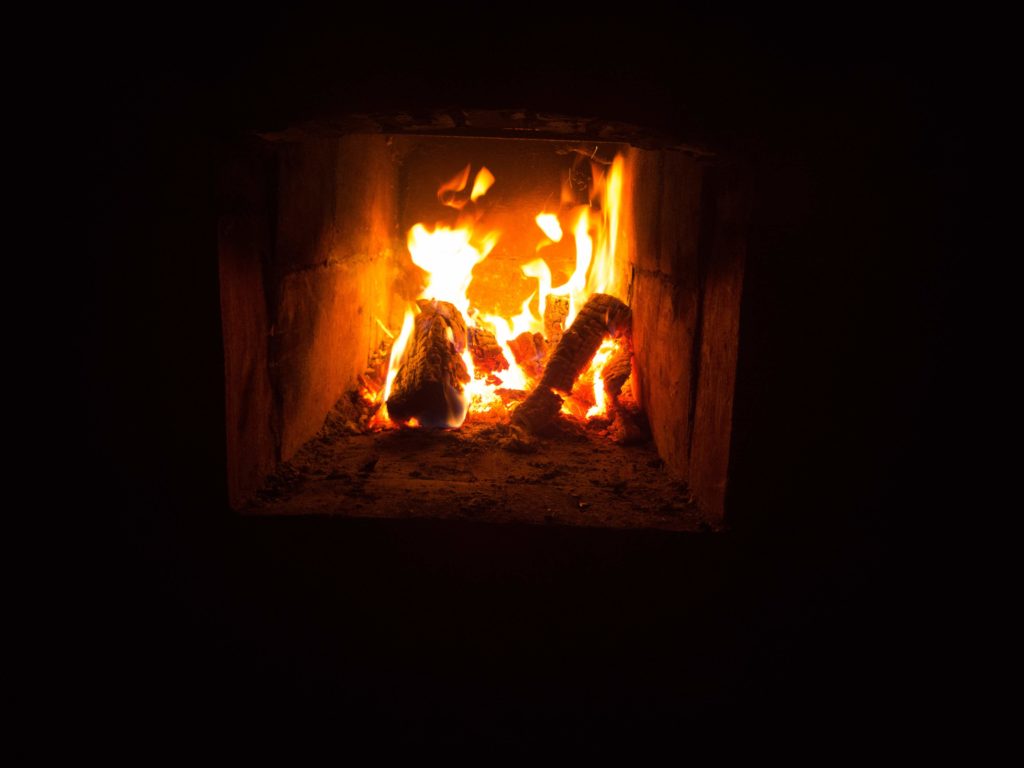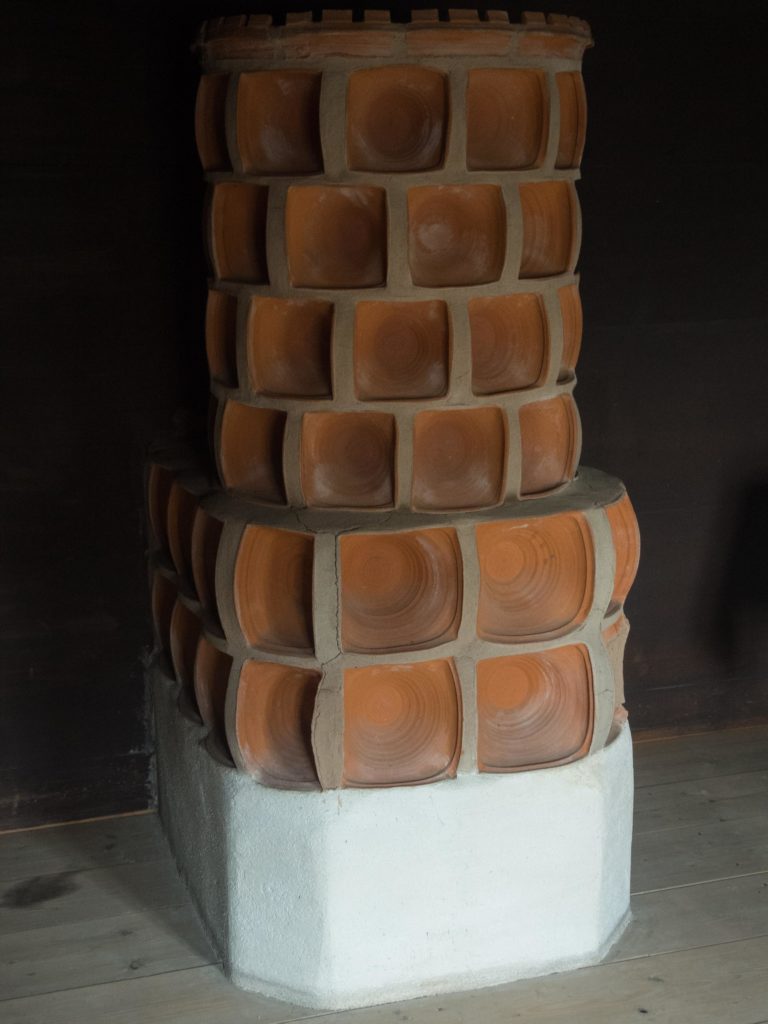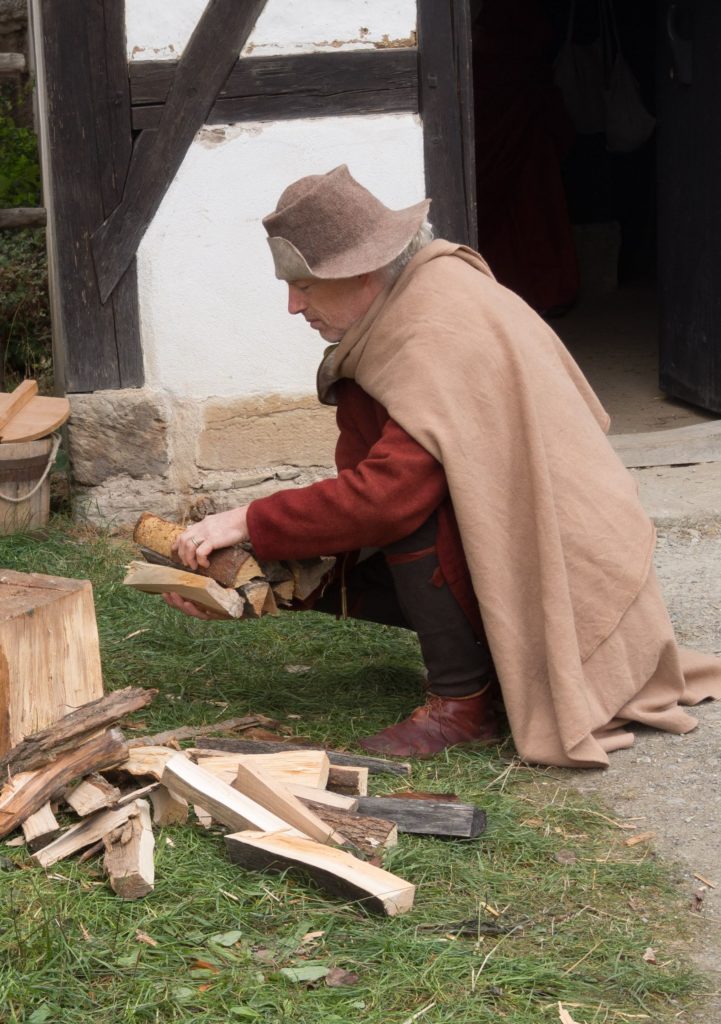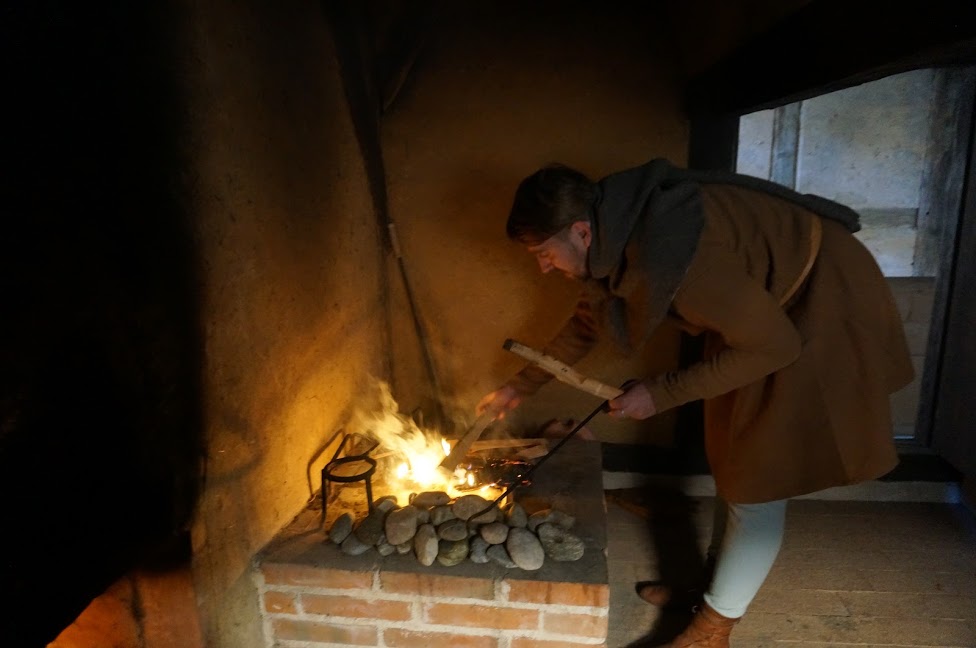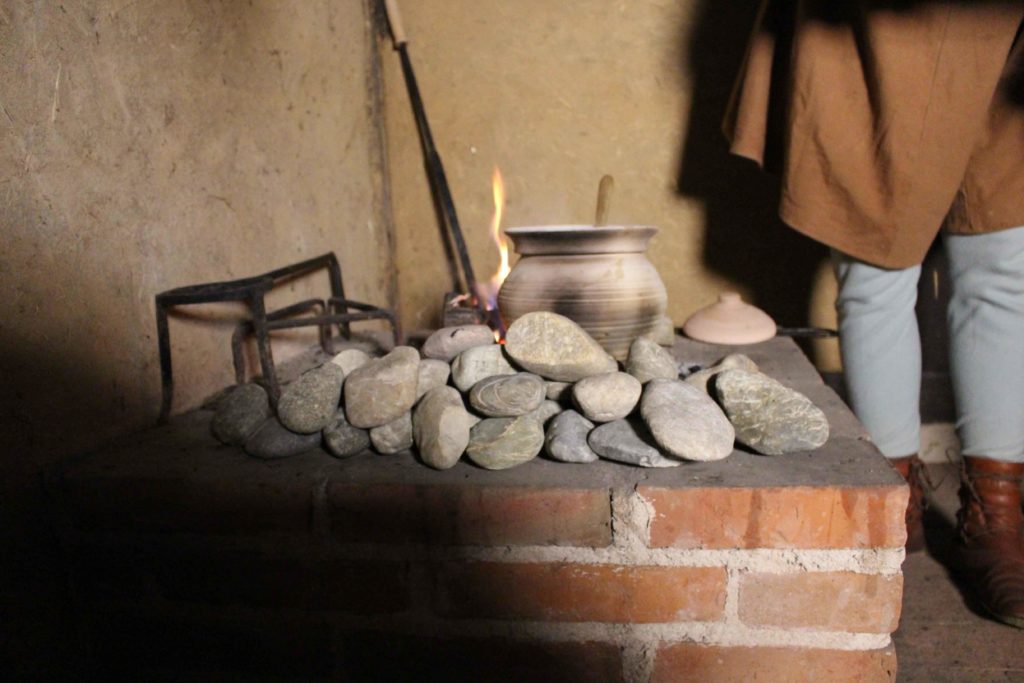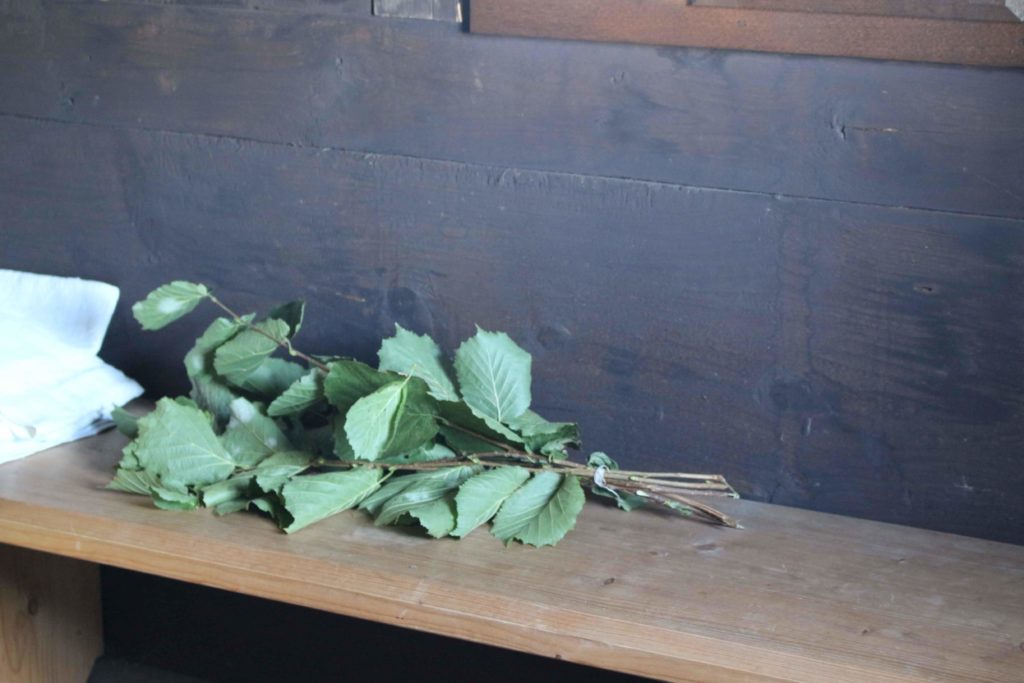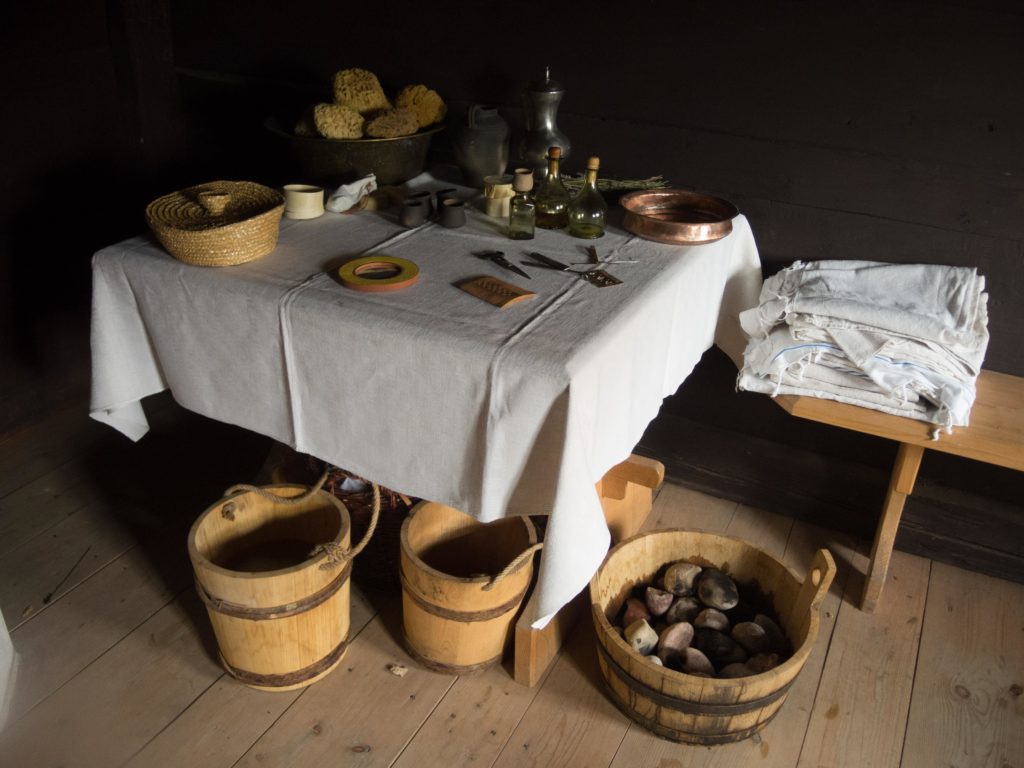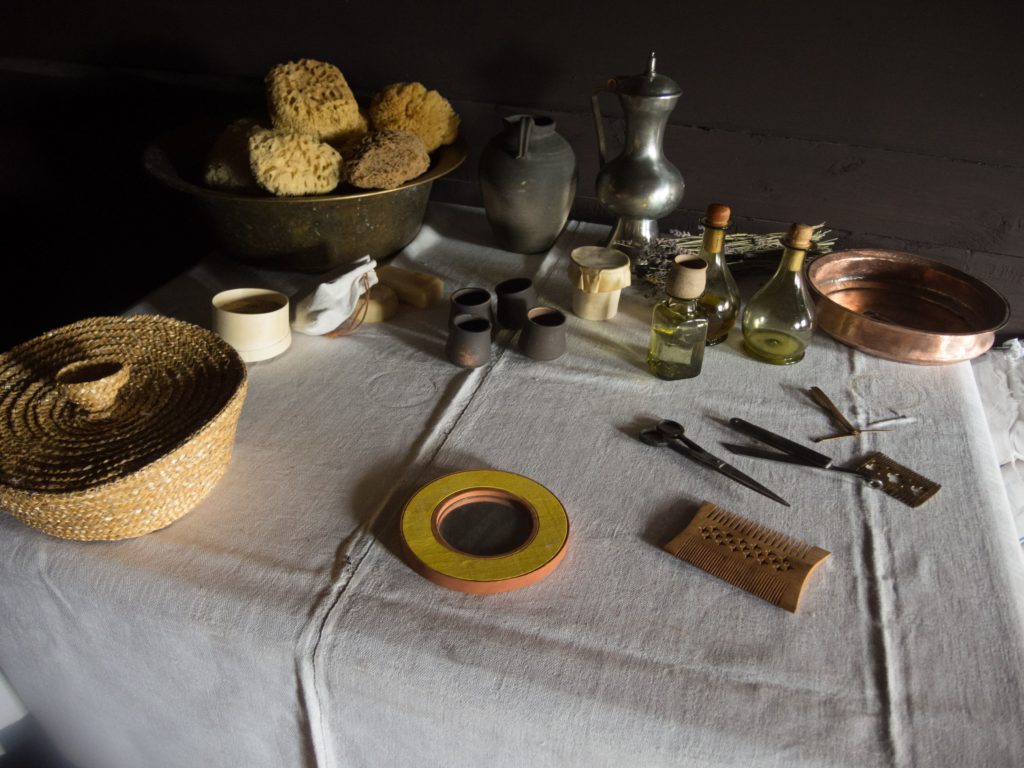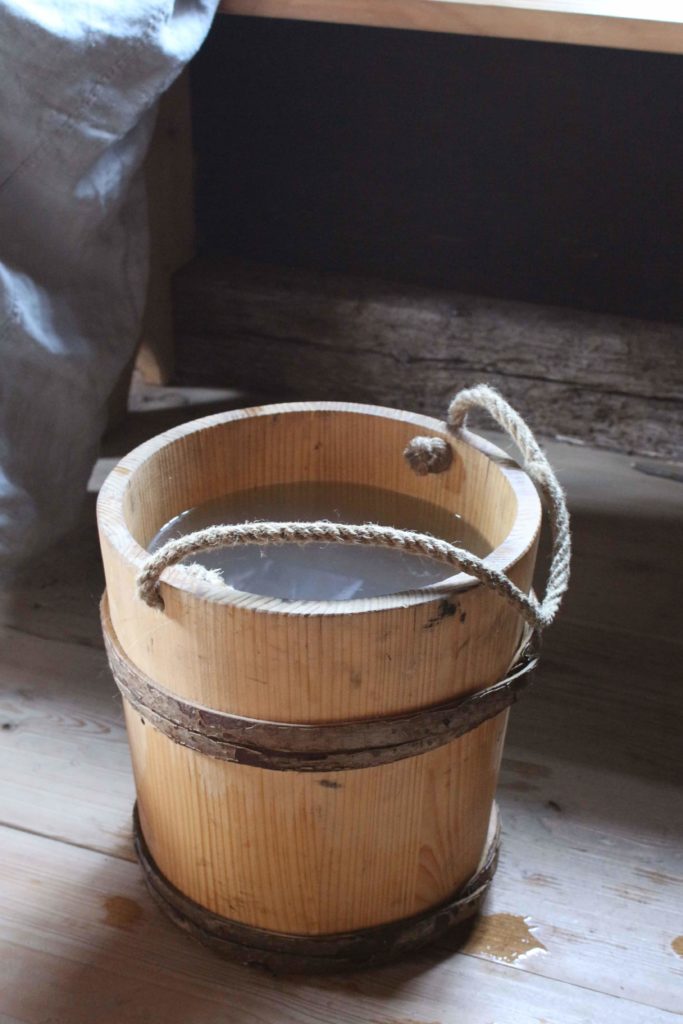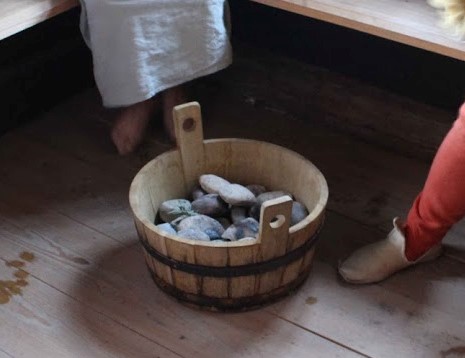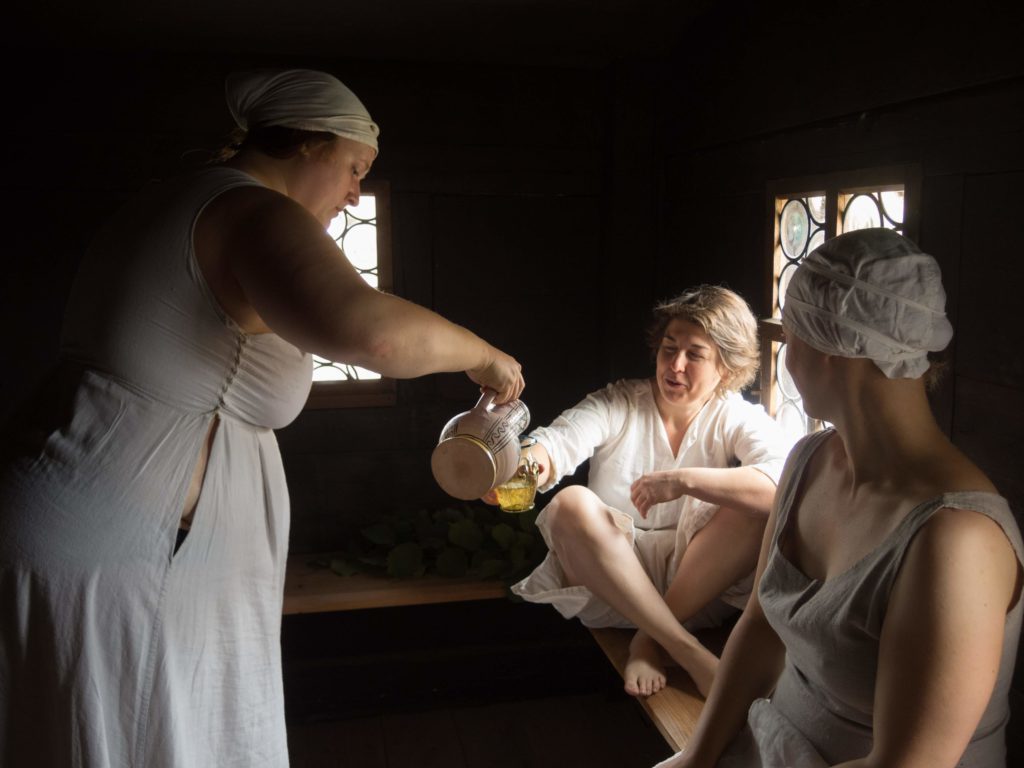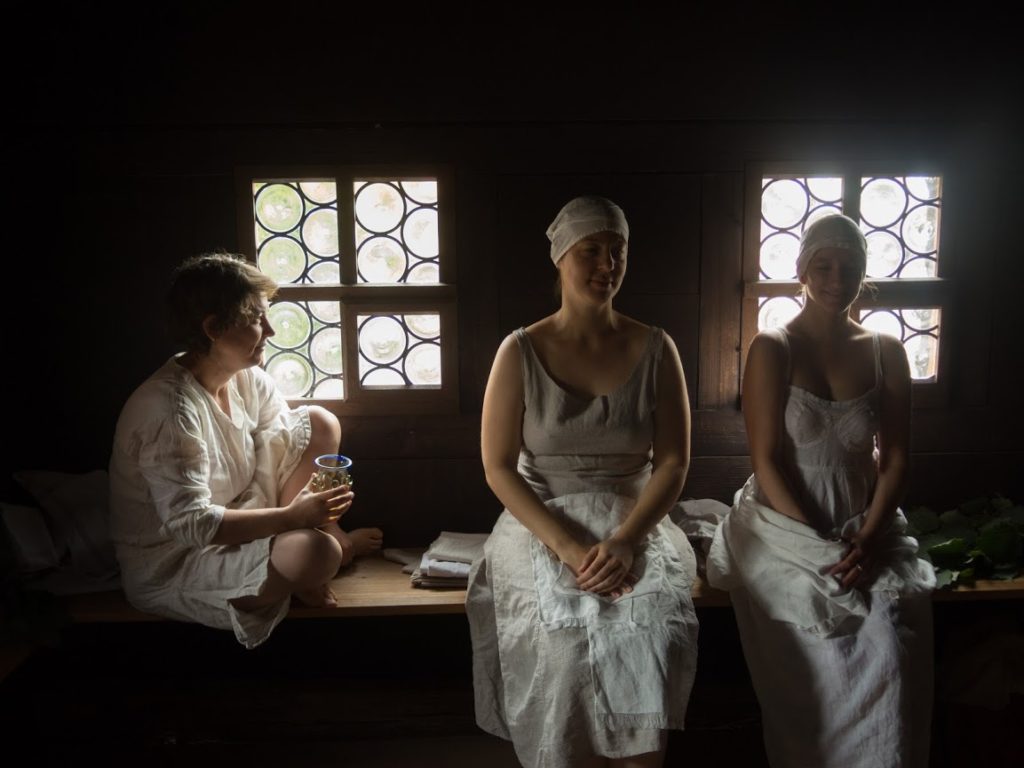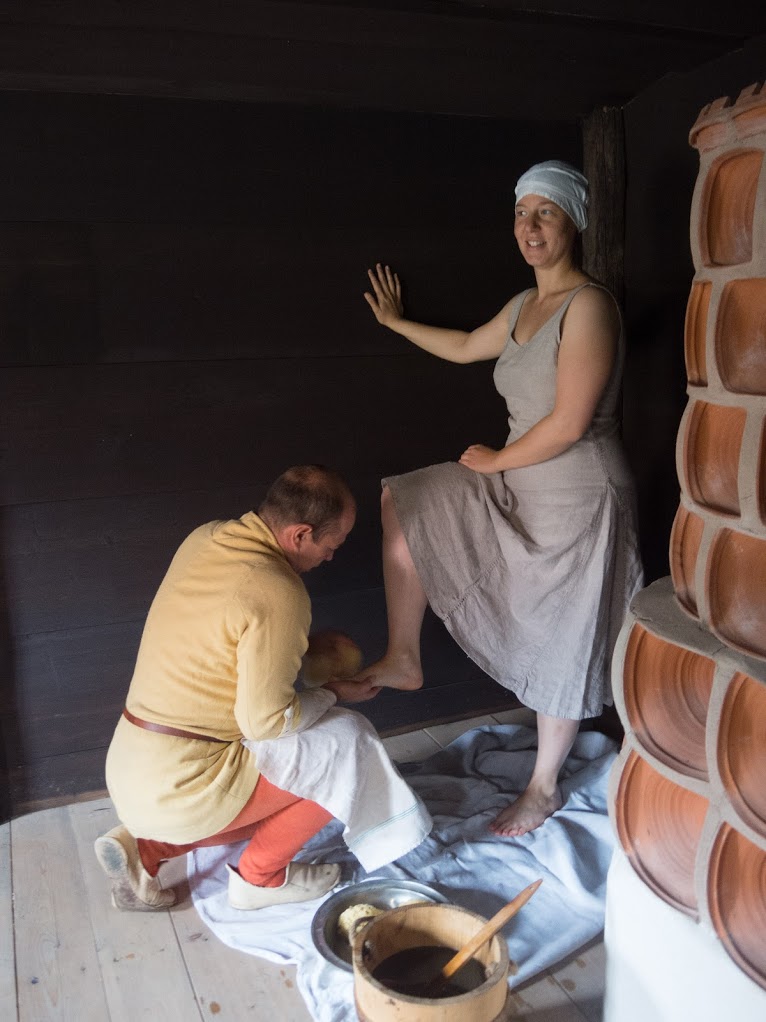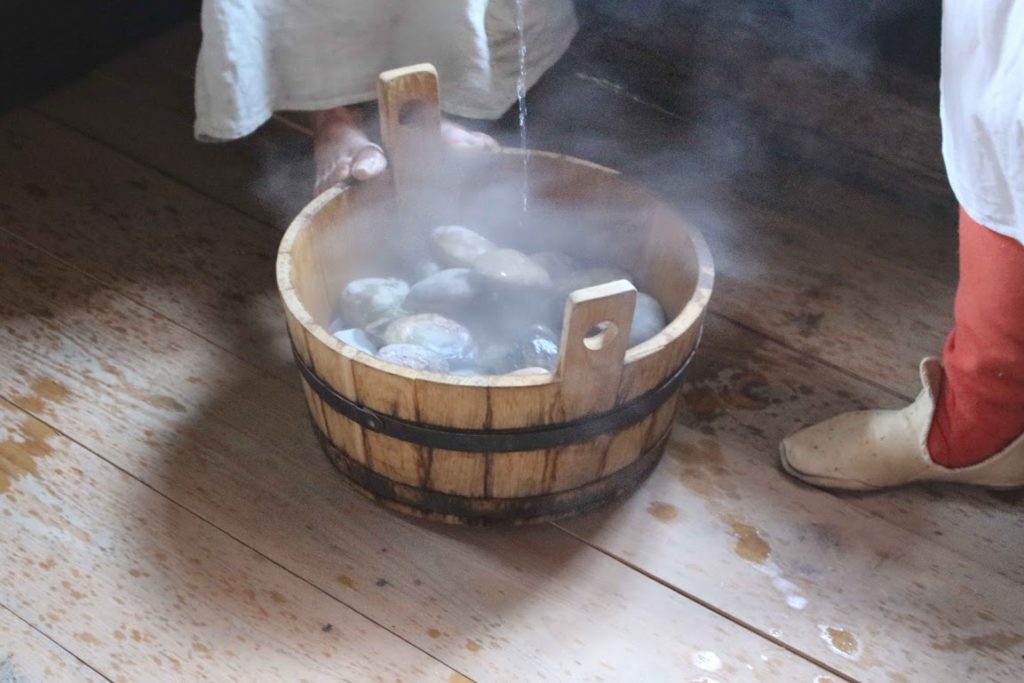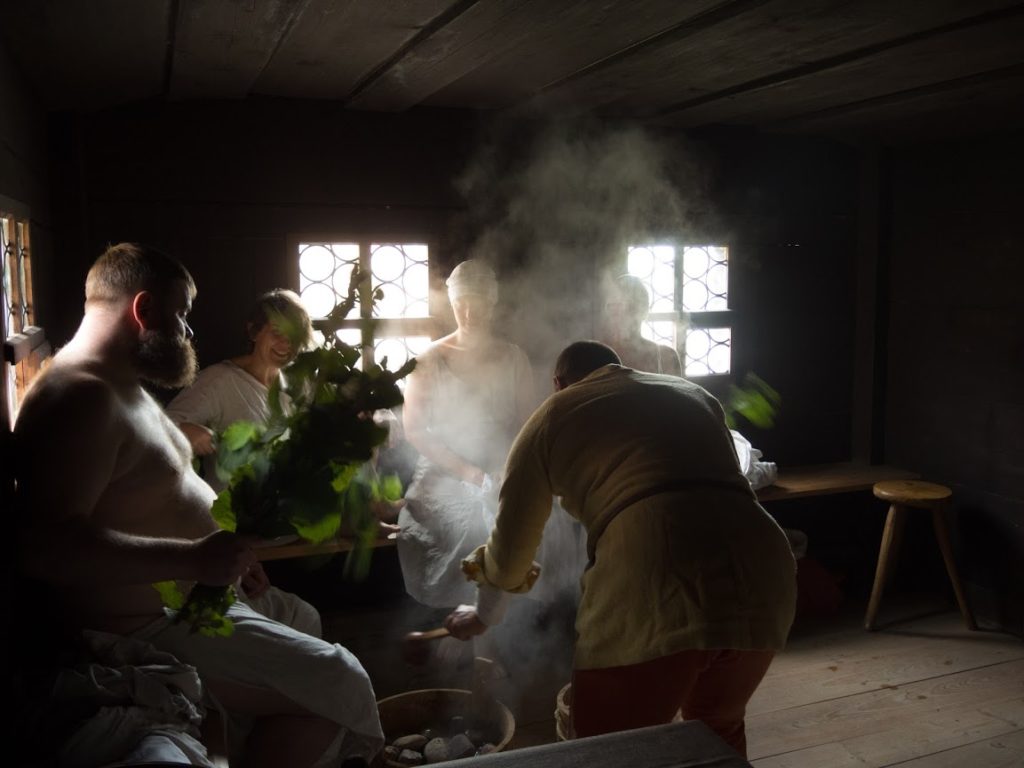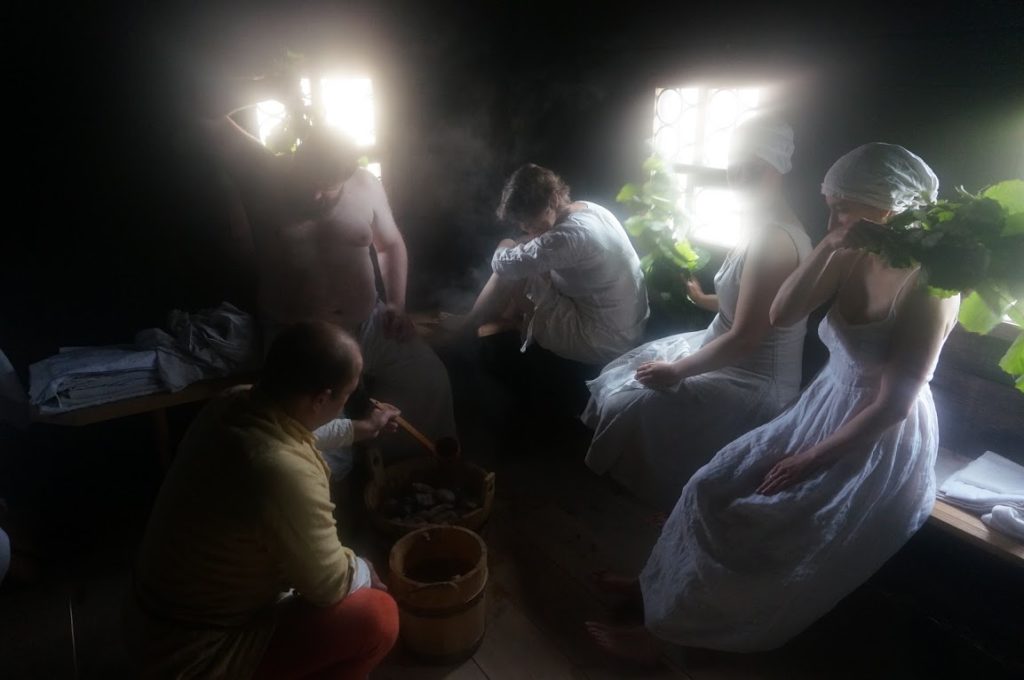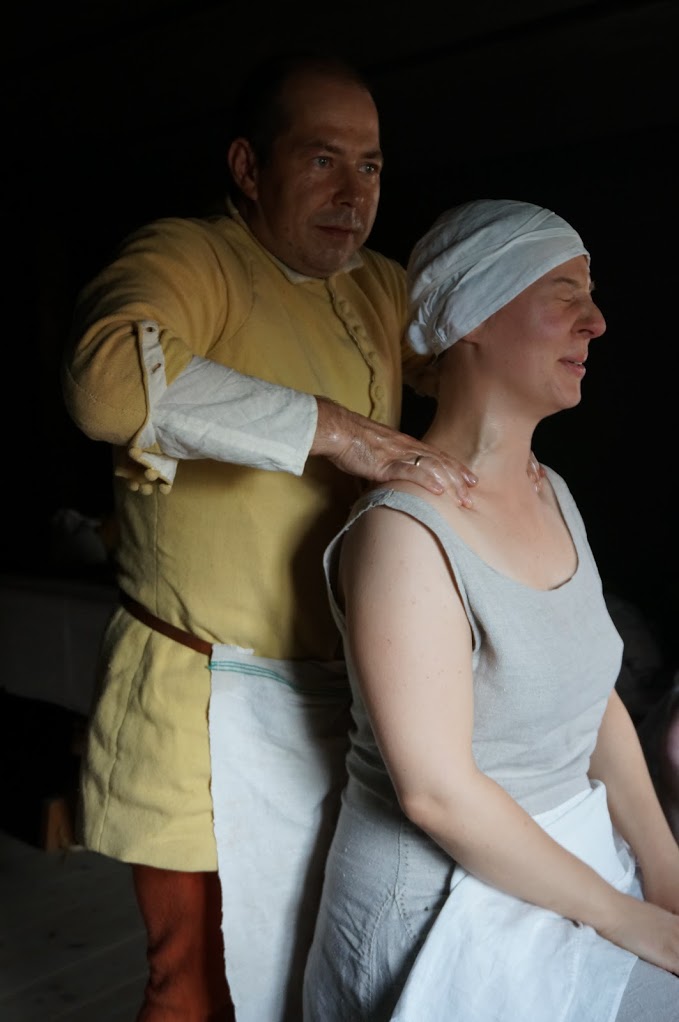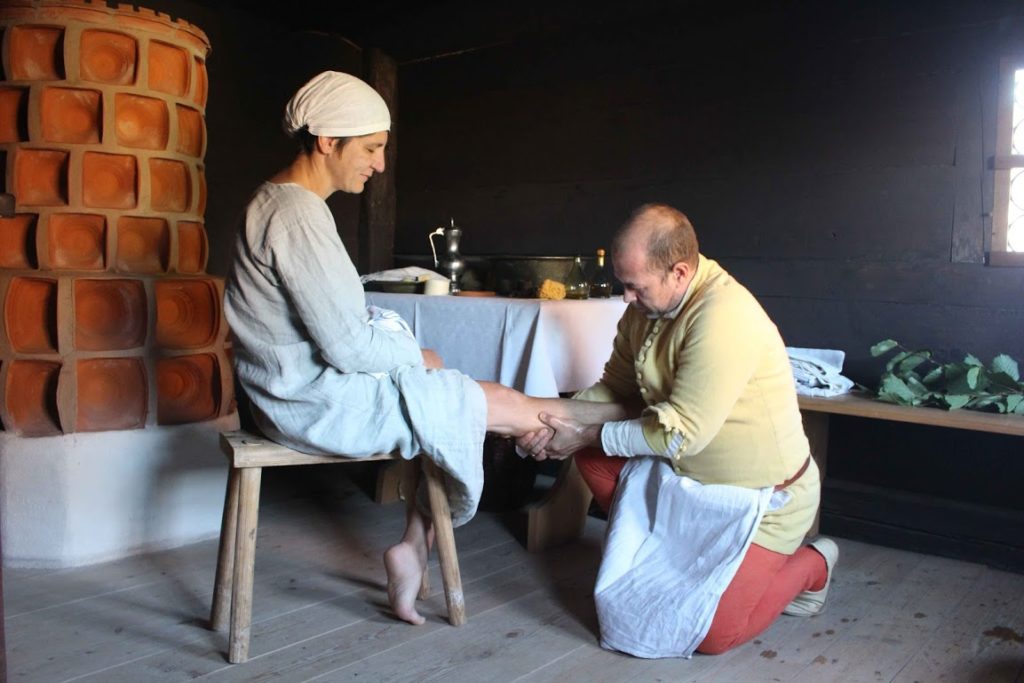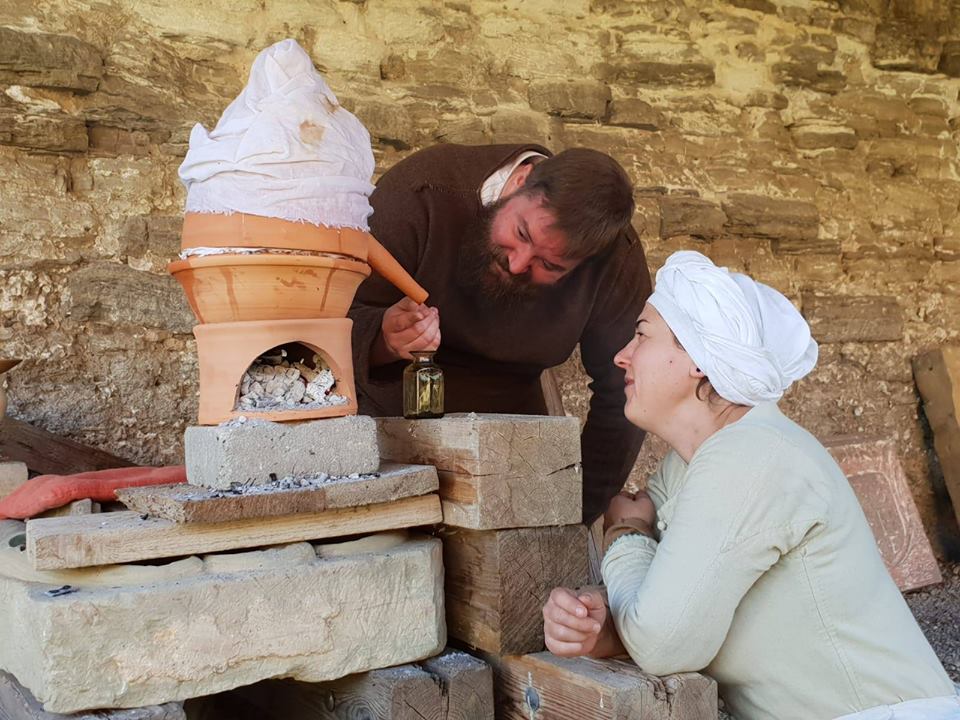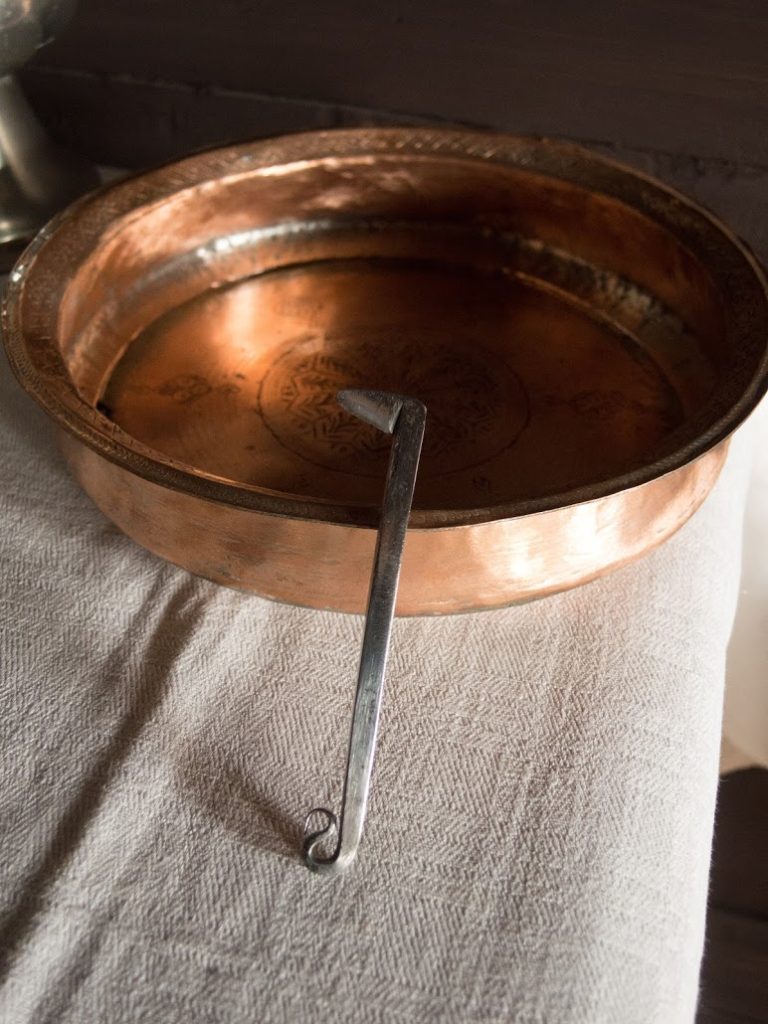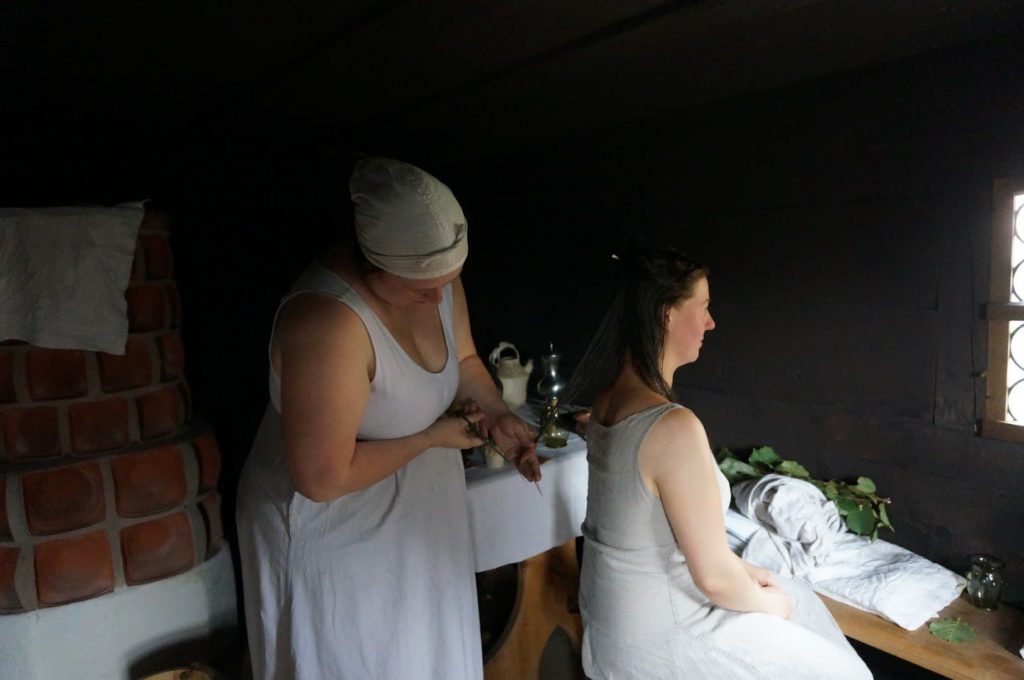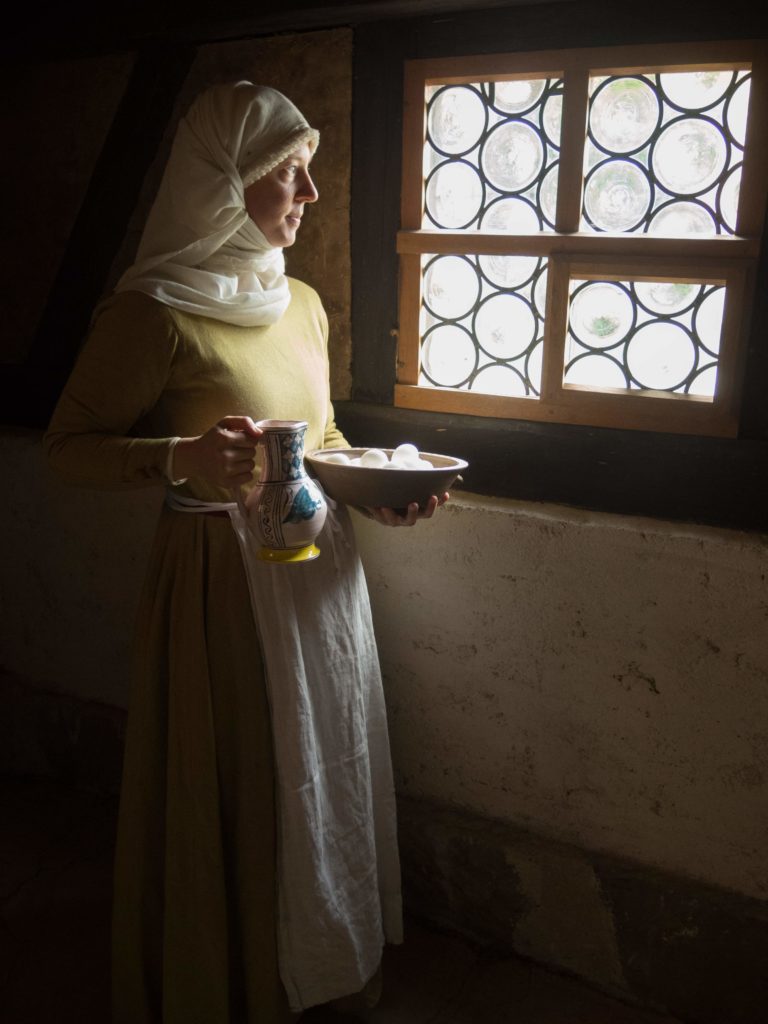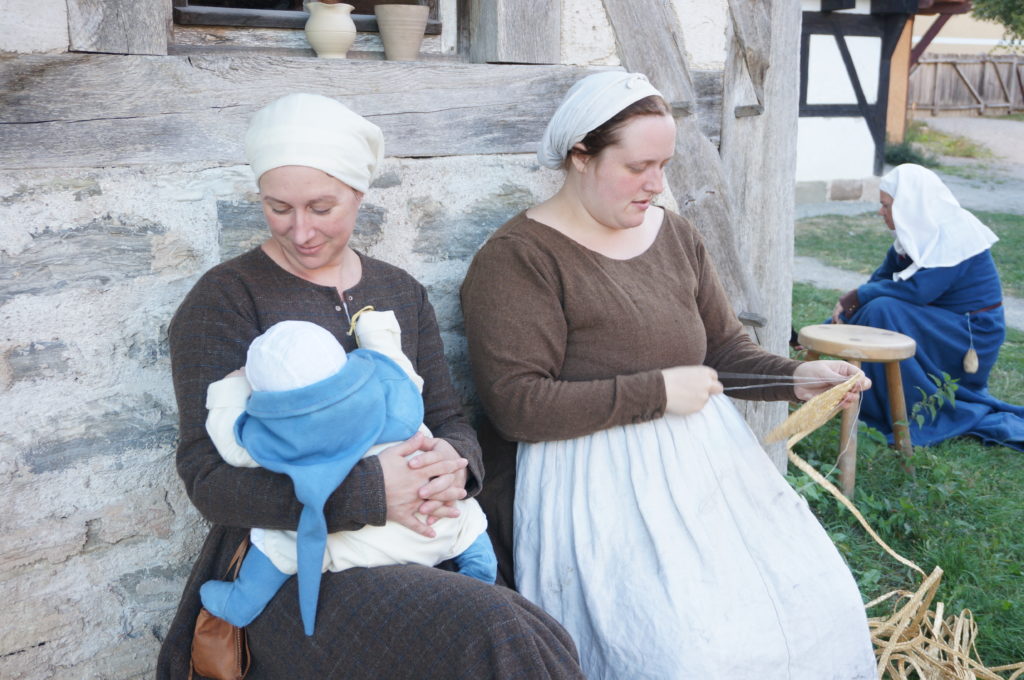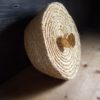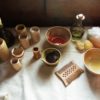A late 14th century (german) bathhouse
At the beginning of last October, I was part of the 14th century team at Medieval days at the open air museum Bad Windsheim, Germany. My colleague Thomas (who played the barber/bathhouse owner) and me (as the bathing maid) were assigned to lead the bathhouse belonging to a late medieval hospital in Bad Windsheim, that was the main topic of this event for us.
Please be aware that with a time setting around 1380-1390, the equipment and some of the costumes may vary from the time frame that can usually be seen on this blog (1350).
Since we have already explained most of the basics of medieval hygiene and bathing culture, especially in Austria and Southern Germany in the article by my colleague Nikolaus (english translation at the bottom), I dearly suggest to go read this article before going on with mine. And you will also find the Video belonging to that article there.
Furthermore I have linked some very interesting literature sources (mostly in German unfortunately) down below and you will also find my collection of pictural evidence and weblinks there, all of which I have used to write this article and of course to reconstruct every detail of our presentation at the event.
In our Blogcategory hygiene and cosmetics in late medieval times you will find even more blogarticles with information on how people of that time kept themselves clean and good looking.
To begin with, I should probably mention that we could not do everything as it would have been the case in a real late medieval bathhouse. We did not have a proper tub as it would be in use for the pre-bath. We also only had a “normal” late medieval tile stove, not one of the multifunctional ovens of the time that would not only heat the sweat bath but also the stones to make the steam and the water for washing. And since we were working in a real late medieval house and not a reconstructed one, we had to take care of the level of air humidity and had a restraint on using open fire and did not have as much space or benches for the bathing guests. A ground floor heatable room would also have been preferable to a first floor room, because any water spilled on the floor was dripping through the cracks in the wooden floor down on our eating table in the room below.
As the bating maid, my first task of the day was to prepare the sweatbath and lay out everything for our daily business.
I first fired the large tile stove in the sweat chamber that was accessible from the kitchens in the next room. The oven took almost two hours to unfold its full heat potential after firing it for only a short period of time and letting the fire die afterwards.
Fortunately I had help from my fellow interpreters to chip and transport the firewood.
Then, using the embers from the ovens, I made a second fire on the hearth next to it on which I heated the bathwater as well as the stones for our first guests. In a real late medieval bathhouse, an alcove in the before mentionned stoves would have done the job of heating the stones. We used large rounded stones from the river since that is what we also see in late medieval pictures of bathing houses. Some of them broke over several uses with extreme temperature changes, of course, but overall, they worked very well and preserved their heat for a long time.
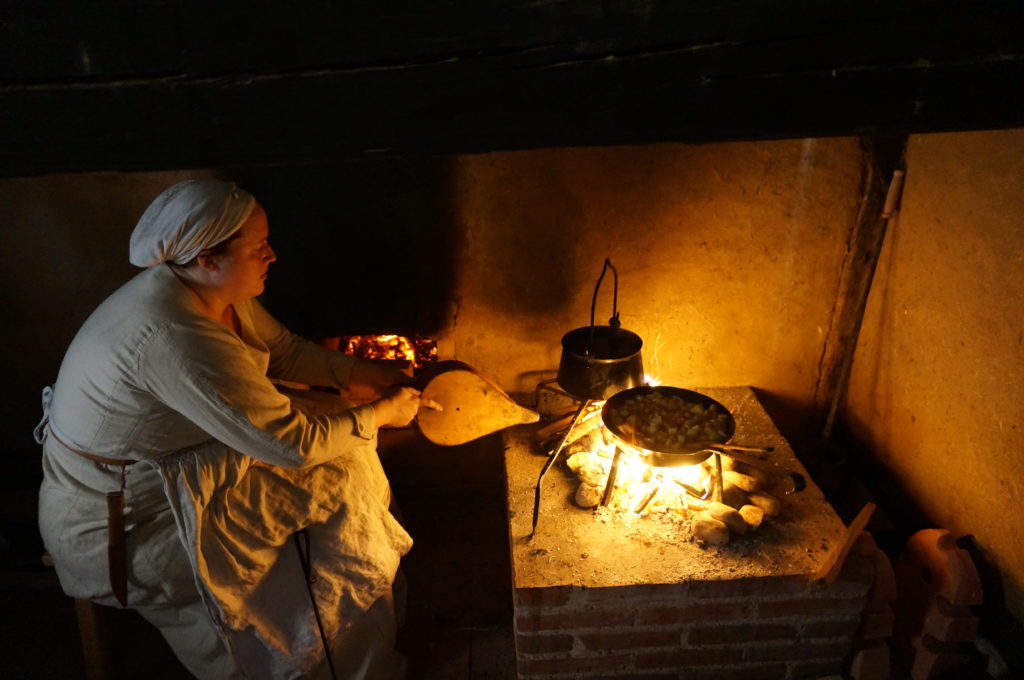
The fire of the hearth was of course also used for other tasks such as making lunch for example :-)
While waiting for the water and stones, I cut young branches in front of the house for fresh bathing fronds, also known under the german word “Badequast”. These fronds were used to spread the steam in the sweat chamber and stimulate the blood circulation of the guests (by hitting their skin). Then I hung one of them on the front door of our bathing room to signal that the bathhouse is open (something that is also mentionned in written sources of the time).
I also sweeped the steam chamber, folded the fresh towels, got water from the well (*coughthetapcough*) and prepared a ladle and several jugs.
From the Mainzer Hof Erfurt we can read in a late medieval text“Szo man baden will, sallen […] die viehemaidt laugen machen, die badestoben wormen und die benck und boddeme, schemel und hultzern pfulffe darin rein weschen” und “Szo man baden will, sal er (der Knecht) holtz zutragen und wasser in den sarck und kessel schoepffen.”
(If anyone wants to bathe, the maid shall warm the chamber and clean the floor, benches and stools and wooden pillows in it. And the hand shall bring wood and water to put into the tank.)
Next to soap, cloth and sponges was a bottle of lavender water, massage oil (olive and almond), face peeling from wheat bran, combs, scissors and razor, a mirror and some of the medical equipment of the barber ready in the chamber. More information on these items can be found in my articles on hair and hairdos and hygiene and cosmetics in late medieval times.
Once the water was cooking, I put some thyme and sage into it to make it smell nice. This is certainly something that would not have been done for every guest of the bathing house. I got the idea from several sources that tell us to put herbs or roses into the bathing- or washingwater.
The Goodman of Paris f.e. suggests to put sage, rosemary or majoram into the handwashing water to make it smell nice.
„If your lord wishes to bathe [….] Have a basin full of hot fresh herbs and wash his body with a soft sponge, rinse him with fair warm rose-water, and throw it over him“ (aus John Russel, Book of Nurture, um 1460)
„The bathes weren thanne araied, With herbes tempred and assaied, And Jason was unarmed sone And dede as it befell to done: Into his bath he wente anon And wyssh him clene as eny bon“ Source
And in the tale of Parcival, it says “dô gebôt der fürste maere dz ein bat bereite waere…man warf dâ rosen oben in […]die knechte truogen nach im rosen dar, gepletert vrisch und wol gevar. der streut er dar uf mich so vil…daz mich noch daz bat niemen sach.”
(The lord commanded for a bath to be prepared for him, they put roses in it and the hands put so many petals into the tub that the tub could not be seen any more)
For medicinal use especially, herbal baths were so common that in Basel in the 14th century there were two bathhouses specialised in herbal baths and in the Ring von Wittenweiler around 1380 it says: “wasserpad mit edelm chraut, daz lawich sey und nicht ze hayss, macht dich schön und dar zuo fäyss.”
(waterbath with noble herbs, lukewarm and not too hot, makes your handsome strong)
To make bathing water from this hot herbal tea, I used an ash bag which I simply filled with 4-5 hands full of ashes from the hearth, which is more than enough to make the water basic enough for bodywashing. It is recommendable to not leave the ashes in for too long or the lye will be to harsh! If the water feels lightly soapy, it is enough. I brought the water to temperature with some colder water and then it was ready to use. A poem by Seifried Helbling in the 13th century tells us what the lye must be like: : „guot louge man (zum Bade) gewinnen sol, luter unde lieht gevar.“ (good lye for the bath needs to be light and clear)
Then I put our hot stones into a bushel (which was watered before) and we were ready to go.
Our guests got some water and if they could afford it, a glass of cool white wine. They say you should watch your liquid intake in the Sauna, right? ;-).
After undressing and looking after the clothing, the guests were ready for a sponge wash.
As mentionned above, we could not do that the proper way, so we chose to do it the way in which you would have bathed at home in that time, with a thorough spongebath.
In reality, a pre-bath in a proper tub would have been the way to go. The guest would sit in it and the bathmaid or the bathhand would spill warm water over them from a jug to get rid of all the dirt and dust from the street. The mode of bathing in that time is very close to what we know from a Hamam bath today.
And of course, since the topic of the event was to recreate daily life in a hospital, patients unable to leave the bed would have been washed with sponges as well.
Afterwards, our bathhouse master Thomas poured the fragranced herbal water over the hot stones and the guests spread the steam with their fronds.
And while the guests were sweating and resting, Thomas had his time to shine because massages are one of his specialties. In medieval bathhouses, this would have been a regular part of what happened in the steam chambers. He set some bones into their positions and made our guests squeel and sigh at the same time.
Normally, massages would have been the task of one of the bathhouse hands and in some cases the maids. In most bathhouses, it was considered indecent to let hands help male guests, while it was totally fine for maids to help male guests.
In the meantime, I filled up on the drinks and gave our guests some lavender water. The use of lavenderwater during and after the bath is mentionned in the “Geistliche Badefahrt” by Thomas Murner around 1514. Sebastian had destilled the water freshly the day before and it smelled like heaven!
Something also regularly done in the steambath was (bloody) cupping. For those who do not know what this is: You cut the skin and put little cups on them, the air of the cups is cooling down on the skin and a vacuum pulls the blood through the cuts. It was believed to pull out “bad” blood and clean the blood. Today, cupping is still done without the cutting in alternative medicine, but since in Germany, only licensed medical practitioners are allowed to do that, we only faked the cupping for our photo and the visitors of the event.
For the cutting of the skin and for bloodletting, I had myself made a so called “fleam” after medieval pictures and ancient and renaissance originals (the form hardly changed until the 19th century)
Other medicinal practices like bloodletting and tooth pulling were also tasks for the barber surgeon, but since they are not part of the bathing process, I will not show them here, maybe you will find these great photos soon in another form.
For the ladies, I offered a historical hair wash with ash base/lye and conditioner and a haircut as well as a nice hairdo.
After the bath, I sweeped the cut hair, emptied the dirty water buckets, hung the damp towels and cleaned up.
After the bath, the guests are traditionally served cooked eggs and wine.
And then I finally had some free time for the evening. I sat in front of the house with the bath master’s wife and his child and the other maids, enjoying the last sun rays and worked on a new bathing hat . This wonderful photo here also shows a bit of the reality of late medieval households. The employees of the household living and working together with the core family.
A bathhouse order of the 17th century mentionned the making of bathing hats to be one of the tasks of bathhouse employees: “Sy sulln auch das laub em anburten und zu bädln pintn als ihm zehaim der maister bedarf… und Sy sulln auch dy huett flechtten und setzen alsvil er ir bedarf”
(They shall bind the bathing fronds as much as the master requires and they shall also make the hats as much as the master requires)
Sources:
- Die Entwicklung des handwerklichen Medizinalwesens im Land Salzburg vom 15. bis zum 19. Jahrhundert, Friedrich Besl
- Ver- und Entsorgung der Mittelalterlichen Stadt – Wasserversorgung, in: Regensburg im Mittelalter, Lutz Michael Dallmeier, 1998
- Gesellige Körperpflege als Aspekt der Alltagskultur im spätmittelalterlichen Regensburg, in: Regensburg im Mittelalter, Michael Prosser, 1998
- Baderzunft im Mittelalter und später besonders in Franken, Ludwig Heffner, 1865
- Krise und Untergang in der Badstube, Widmann Martin, 1999
- Im städtischen Bad vor 500 Jahren, Robert Büchner, 2014
- Öffentliche Badehäuser in Deutschland und der Schweiz im Mittelalter und der frühen Neuzeit, Birgit Tuchen, 2003
- Die älteste Görlitzer Bruderschaftsordnung von 1400, Die Satzung der Bader, Neues Lausitzisches Magazin, 2008
- Spätmittelalterliche Badekultur – Der badende Körper und seine Visualisierung in den illustrierten Tacuina sanitatis, Simone Westermann
- Spuren des Alltags, der Windsheimer Spitalfund aus dem 15. Jahrhundert; Hermann Heidrich und Andrea K. Thurnwald, 1996
- Körperpflege und Kleidung bei den Deutschen von den ältesten geschichtlichen Zeiten bis zum 16. Jahrhundert, Moritz Heyne, 1903
- Gesundheitspflege im Mittelalter; kulturgeschichtliche Studien nach Predigten des 13., 14., und 15. Jahrhunderts, Kotelmann Ludwig Wilhelm Johannes, 1890
Abbildungen öffentlicher Thermalbäder aus dem Mittelalter
Meine Bildquellensammlung zum Thema Badehaus
A history of bathing before 1601
Related Posts
The following posts might interest you as well:





